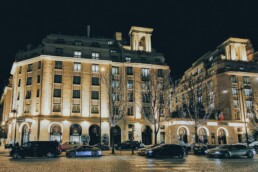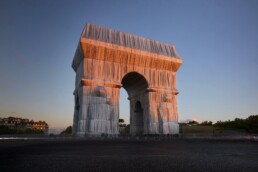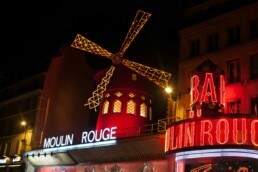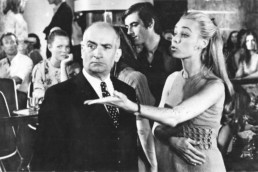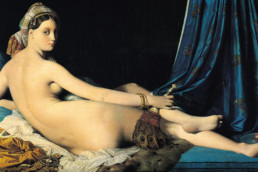In the winding streets of Montmartre, under the changing sky of Paris, lived a man whose soul seemed woven from the dreams and anxieties of the Belle Époque. Henri de Toulouse-Lautrec, born in Albi, found in this bohemian neighborhood his true home, a sanctuary where his passions and artistic genius could freely blossom.
The Lover of Absinthe and Cabarets
Toulouse-Lautrec, with his recognizable silhouette and love for absinthe, roamed the cobbled streets of Montmartre, a Parisian like no other yet so unique. The cabarets, such as the Moulin Rouge and the Folies Bergères, were for him stages where life unfolded in a whirlwind of lights, laughter, and movement. His evenings were often spent within the smoky walls of these places, where dance and music infused the air with an ineffable magic.
The Eternal Dance of the Moulin Rouge
It was at the Moulin Rouge that he found an inexhaustible source of inspiration. It is said that one night, while sitting at a table in the shadows, a glass of absinthe in hand, he observed a fascinating spectacle: the chahut-cancan led by Valentin le Désossé. This scene captivated his imagination, and he immortalized that moment, adding a personal touch to the legend of this mythical cabaret.
The Brothels and Their Secrets
But Toulouse-Lautrec was not only a regular at cabarets; he was also a keen observer of brothels, those secret places where life was revealed in all its rawness and intimacy. The prostitutes knew him well, considering him their mascot. They opened the doors of their daily lives to him, and in return, he captured with tenderness and realism the beauty and sadness of their existences.
Anecdotes and Memories
Among the many anecdotes that punctuate the life of Toulouse-Lautrec, one stands out. One evening, in a burst of creative fervor, he decided to sketch the dancers he saw on stage. With astonishing speed and precision, he filled entire notebooks with sketches, each line capturing the grace and energy of their movements. These sketches would later become iconic works, silent witnesses of a bygone era.
Thus, in the quiet of the following morning, as he left the cabarets, a secret smile on his lips, Toulouse-Lautrec carried with him a multitude of stories and faces, ready to be transcribed onto canvas. Each painting, each drawing, was a fragment of that vibrant and sometimes melancholic world he so cherished.
Conclusion
Henri de Toulouse-Lautrec remains an timeless figure of Montmartre, an artist whose piercing gaze captured the essence of an era full of contradictions. Through his works, he invites us to enter a universe where beauty and decadence mingle, where every character tells a story and every scene transports us into the very soul of Paris.
Lire également :
18 November 2024
Au Rocher de Cancale
12 November 2024
George V: A Palace of Beauty and Tranquility
9 November 2024
Wrapped Memories: Christo’s Arc de Triomphe
7 November 2024
The Moulin Rouge: A Parisian Nocturnal Epic
28 May 2019
Geneviève Grad
21 June 2017
Molitor: Paris’ Timeless Oasis
22 May 2017
The “Collier de Chien” Bracelet by Hermès
21 January 2017





